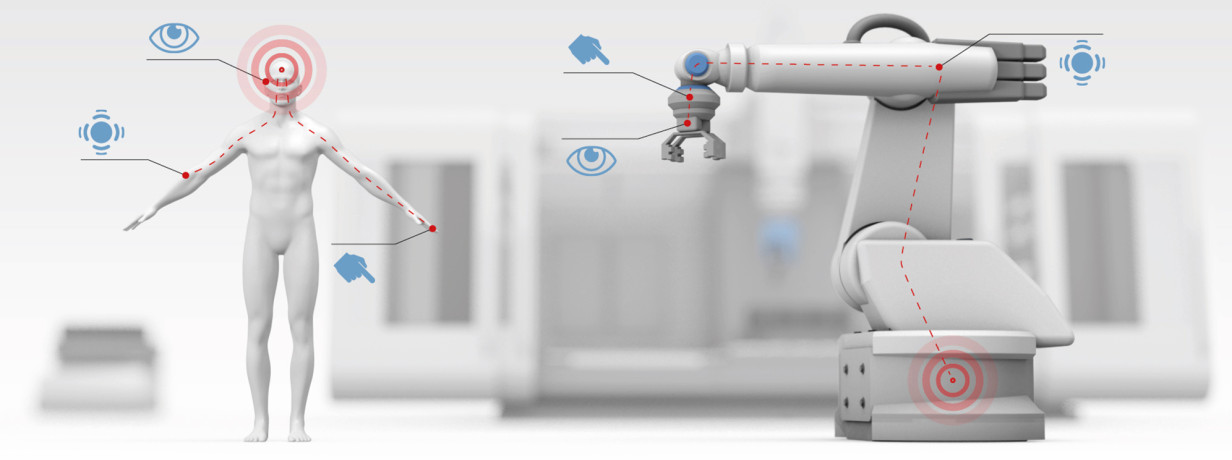Fundamentals of Automation

Man as a paradigm for automation
A machine works – to put it simply – like a person. Just as we humans perceive our surroundings using our sensory organs, a machine detects its environment using sensors, devices and distance measurement systems. The machine continually picks up signals and sends them over the network to the controller. The controller interprets them as input signals and sends them as output signals to the actuators. For example to valves, drives or stack lights which in turn trigger an action and set the machine in motion.
Our body and its technical counterpart
A machine is the technical counterpart to the human body:
Sense of sight, taste, smell, touch – Vision, pressure, photoelectric, inductive, capacitive sensor, position/distance measurement system
Sense of hearing – RFID read head, ultrasonic sensor
Nerves – Network, cable, connector
Brain – Controller, PLC
Language – RFID read head, horn, SmartLight
Muscles – Valve, drive, motor, stack light, horn
